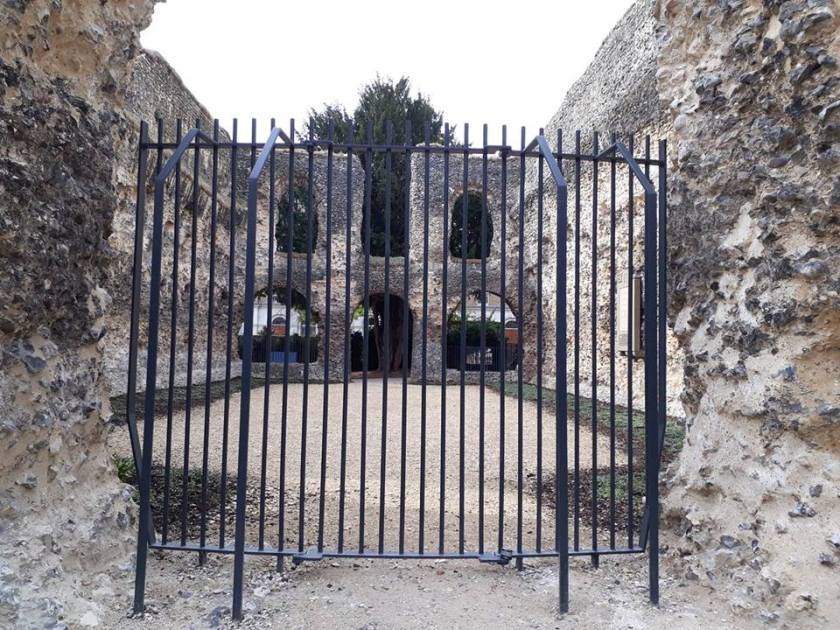
So, we return from our brief intermezzo in York Magistrates’ Court to the matter in hand: how, in the face of overwhelming odds, to get at the truth.
We’ve progressed from the inciting incident, through primitive attempts to beat or twist the tale out of people, to the first science-based monitoring of the signals inadvertently given out by a body under stress – a process which carries with it the rather less scientific assumption that heightened stress implies lying.
The road now takes us to Chicago, a city still bruised from the beatings led by its recently-deceased Chief of Police, one Jon Graham Burge, and native city of one John E. Reid.
John Reid started out ‘on the beat’, but also trained in using the polygraph. A physical giant of a man, he enthusiastically embraced the idea of telling an interrogee that they were lying – ‘The polygraph says you are lying’ – in order to put them under stress. Recall, the philosophy that lies behind polygraph use is that constructing a fake tale is more physically stressful than recounting the truth. The interrogee doesn’t get to see the traces and these days, with electronic displays instead of pens on rolls of paper, they can’t even use sound as a clue.
Reid used this particular gambit in a gruelling interrogation which culminated in the confession, by one Darrel Parker from Nebraska, to the murder of his wife, Nancy. Darrel Parker was found guilty at his trial, and sentenced to life imprisonment.
The successful case launched Reid’s career. He developed and polished the method, now adopted throughout the U.S.A., which still bears his name.
In the preliminary phase the interviewer simply chats, in a non-threatening way, with the suspect. From this they ‘calibrate’ their body language: how the interviewee looks when relaxed, under stress, or puzzled. Questions about the crime are then worked into the conversation, and signs of stress and lying are sought. One of these signs, quoted in the manual, has an almost superstitious ring to it: a person trying genuinely to recall an event will look up and to the right, whereas one lying will look down and to the left. No-one, as far as I know, has proven this scientifically, nor indeed specified whether it’s the other way round for left-handers.
We now come to the meat of Reid’s method. It takes us down nine steps:
- The interviewee, having been left alone for a time, is re-joined by the interviewer, who is now carrying an impressive-looking file. This file is said – or implied – to hold solid evidence of the interviewee’s guilt.
- ‘But you’re, kinda innocent’ – perhaps there’s some excuse for the crime, such as desperation, impaired judgement, or being ‘put up to it’ by someone else, the ‘real’ criminal. The interviewer watches or listens for signs that one of these get-outs resonates with the interviewee, while all the time…
- Stymieing any of their attempts to deny guilt altogether.
- By this time the interviewee will want to try and explain why, or how, they couldn’t possibly be the guilty party. They’ll do this because none of their outright denials will have been acknowledged. This might take some time. Two hours without food will take its subtle toll on most civilians, without being outright inhumane.
- At this point the interviewer has to appear to soften. The manual advises lowering position, approaching the interviewee; speaking quietly and appearing comforting. Using clues from the previous discussion, the interviewer can then…
- Present the interviewee with a ‘soft’ and a ‘hard’ version of why, or how, they committed the crime.
- By now the interviewee would have to muster quite some will-power to dismiss the entire conversation and revert to protesting their innocence. They may think all grounds for protest have been exhausted.
- Other people can now come in to the room, and the interviewer encourages the interviewee to confirm what has already been said.
- The interviewee signs their ‘confession’.
Most juries to this day regard a confession, more even than forensic or eyewitness evidence, as definitive proof of guilt.
Variations on the theme crossed the Atlantic to the United Kingdom in the seventies. I still remember a Police representative in a TV documentary from that time describing their interviews using the delightful English euphemism of ‘leading the criminal into a walled garden’ – note the implied assumption of guilt.
But there’s a twist to the tale.
Recalling ‘Frenchie’ (Byrnes’ first case), and then the mystery of the missing diamond ring among those comprehensively-polygraphed young women from Berkeley, can you guess what it might be, before peeking?
To crown it all, psychologists have now found that the only difference between a typical person and an ‘expert’ in determining whether someone is lying is the degree of confidence expressed in the result – not its accuracy. To reiterate: a psychology professor, a police inspector, and others whom you may think would have some secrets gleaned from a career of experience, are no better at detecting a new acquaintance’s porkies than you are.
The problem of ‘false positives’ – guilty confessions by innocent people – has not gone away. Here in the UK it has brought us the Guildford Four, the Birmingham Six, and a slew of other miscarriages of justice.
And compared with certain techniques developed on both sides during the Second World War, we have gone backwards – away from our Navy Base encounter with Kate.
